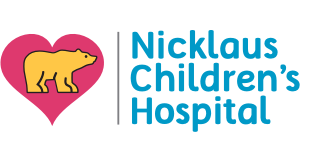Search results
-
Intraventricular Hemorrhage in Newborns for Parents
An intraventricular hemorrhage (IVH) is bleeding in and around the brain’s ventricles. Most babies with a mild IVH do well.
-
Neuroblastoma for Parents
Learn about neuroblastoma, a rare type of childhood cancer that develops in infants and young children.
-
Your Newborn's Growth for Parents
A newborn's growth and development is measured from the moment of birth. Find out if your baby's size is normal, and what to expect as your baby grows.
-
Blood Types for Parents
Categorizing blood according to type helps prevent reactions when someone gets a blood transfusion. Find out how blood types work.
-
Blood Types for Teens
Blood might look the same and do the same job, but tiny cell markers mean one person's body can reject another person's blood. Find out how blood types work in this article for teens.
-
Von Willebrand Disease for Parents
Easy bruising and excessive bleeding can be signs of Von Willebrand disease, a genetic disorder that affects blood's ability to clot.
-
What Are the Risks of Steroid Use? for Teens
Will using steroids transform you into the most powerful athlete your coach has ever seen? Read this article to learn the facts on steroid use.
-
Slipped Capital Femoral Epiphysis (SCFE) for Parents
Slipped capital femoral epiphysis (SCFE) is a shift at the upper part of the thighbone, or femur, that results in a weakened hip joint. Fortunately, when caught early, most cases of SCFE can be treated successfully.
-
Bones, Muscles, and Joints for Teens
Our bones, muscles, and joints form our musculoskeletal system and enable us to do everyday physical activities.
-
Bones, Muscles, and Joints for Parents
Without bones, muscles, and joints, we couldn't stand, walk, run, or even sit. The musculoskeletal system supports our bodies, protects our organs from injury, and enables movement.


 Note: All information is for educational purposes only. For specific medical advice,
diagnoses, and treatment, consult your doctor.
Note: All information is for educational purposes only. For specific medical advice,
diagnoses, and treatment, consult your doctor.